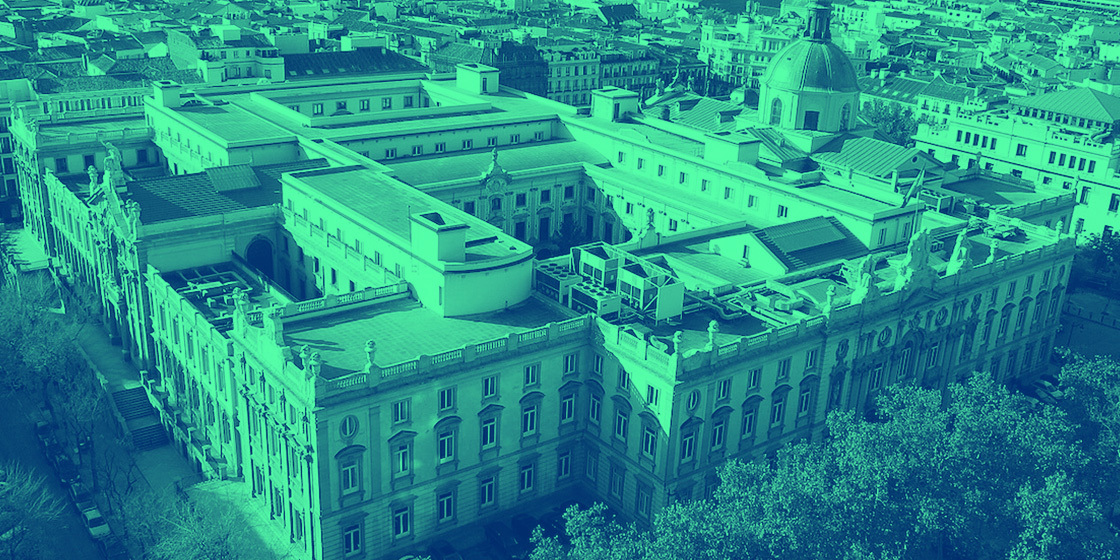Transparency of public-sector algorithms at stake: Civio files BOSCO appeal with the Supreme Court
Can the government actually refuse to disclose how programs that decide on our rights operate? And do so using intellectual property as an excuse? We say no, they can’t, and the High Court already has our arguments in its hands.
The Supreme Court has already been presented with our arguments as to why the algorithms that affect us need to be made public. This court recognised the importance of the BOSCO case by admitting Civio’s appeal in November 2024. The order rules that the issue for resolution is whether or not it is appropriate to release the source code for the computer application used to determine who is eligible for the electricity discount rate—a discount on electricity bills that affects thousands of vulnerable people. These are groundbreaking legal proceedings in which the transparency of public algorithms is being decided, a crucial step to ensure adequate oversight and accountability.
The appeal for reversal that Civio lodged yesterday argues that the public interest in accessing the BOSCO source code should weigh more than the protection of intellectual property and other limitations introduced by stealth into the proceedings, such as the risk to security. It also maintains that, if said restrictions are used in an entirely unjustified and disproportionate way, the door would be open to opacity in automated decision-making, without citizen or judicial oversight.
Now, the Supreme Court has the floor to decide whether transparency will prevail or opacity be enshrined as the norm.
BOSCO case: 6 years and running
In 2018, Civio requested the source code, functionalities, and test cases for BOSCO, the program that decides who is eligible for the electricity discount rate. The government denied us access, but we appealed before the Council for Transparency and Good Governance (CTBG in Spanish), whose resolution granted us access to the functionalities and test cases. Both of these elements were vital: they enabled us to demonstrate that BOSCO had been designed with errors that excluded people entitled to the benefit. However, the Transparency Council also denied us access to the source code, which details all of the algorithm’s instructions, and with which we would have been able to confirm or rule out the existence of any further errors.
Following years of refusals and excuses grounded on intellectual property and security, the courts turned their backs on us in 2022 and 2024, as well as sentencing us to pay EUR 3,500 in costs.
Intellectual property: a limit that cannot be absolute
The government refuses to give us the BOSCO source code due to intellectual property rights. At Civio, we maintain that this code is not subject to copyright since a public algorithm is comparable to a regulation or administrative order, neither of which is subject to copyright. However, even if this were not the case, the limits of intellectual property would not automatically justify non-disclosure of the source code. Although the Transparency Law itself (Art. 14.1(j)) allows for the denial of access on intellectual property grounds, it is only possible to do so where the public interest in knowing such information does not prevail.
Civio argues that the government has not conducted any such analysis, pointing out that on other occasions, the Supreme Court has already ruled that no limit to access can be applied absolutely, unjustifiably or disproportionately: it must be weighed on a case-by-case basis. If the intellectual property argument were accepted without nuances, the appeal presented by Civio notes, practically any document produced by the government—from databases to official reports, and in any medium—could be left out of the reach of citizens.
Civio also draws on Article 14.2 of the Transparency Law, which obliges the government to perform a damage test, in other words, to demonstrate in detail what specific damages would be derived from making the information public. Remember, the idea that keeping BOSCO’s code a secret guarantees more security is a principle—”security by obscurity”—that’s widely discouraged by experts. As such, the appeal mentions the COVID Radar app’s open source code, for example, to demonstrate that the government has previously published source codes without this having entailed any security issues, even with particularly sensitive information such as healthcare data.
Legal certainty and judicial control: the right to know how a decision is made
Besides accessing the BOSCO source code, the appeal focuses on citizens’ right to understand how decisions that directly affect them are made. Civio invokes Article 9.3 of the Spanish Constitution, which guarantees legal certainty so that people can know the rules and criteria that affect them, and, where applicable, whether these are fair or not. If the algorithms that automate such decisions are opaque, those affected are left completely defenceless and unable to question potential errors or biases, Civio argues.
According to the appeal, this lack of transparency could also put judicial oversight of automated decisions at risk. To this end, we refer to Article 106.1 of the Constitution, which requires that the courts be able to review the legality of administrative proceedings. It is Civio’s understanding that, without access to the source code, judges cannot verify whether BOSCO is operating in accordance with the law, thus affording the government a discretionary power with no external scrutiny. The appeal draws from comparative law to reinforce this argument: in 2019, Italy’s Council of State ruled that the source code of public algorithms should be accessible for judicial review.
Partial access: what can be shared, should be shared
Civio underscores that, where certain information is protected, the Transparency law makes it mandatory for access to be granted to the remainder of the data. Article 16 provides that authorities cannot deny access completely where it is possible to provide a partial version that leaves out sensitive parts.
In this case, according to the appeal, the government has not evaluated or explained why it is unable to deliver a partial version of the code, removing any information deemed compromising. Partial access is not a discretionary option, Civio points out, but a legal obligation, and this will be the Supreme Court’s first ruling on the application of said principle.
Changing the rules halfway through
Lastly, Civio refutes the idea that the government be allowed to submit new facts before the courts—which were not previously alleged before the Transparency Council—in order to deny access to information. When we requested the BOSCO source code, the Transparency Council refused to grant us access based on the intellectual property limit, without its resolution raising any other problems. It was only once the legal process was already under way that the government suddenly resorted to other restrictions—such as computer security, the protection of economic interests, confidentiality or the protection of information obtained from third parties—without those limits being filed in the ruling we have appealed against. For this reason and using a sporting simile, Civio maintains that the goalposts cannot be moved in the middle of a match and that the discussion around access to the source code should focus solely on the limit established in the Transparency Council’s aforementioned ruling.
At stake, an important precedent for transparency
The Supreme Court now has the responsibility to set the boundaries between transparency and opacity in an era of automated decision-making. If it endorses the restriction of access using generic arguments about intellectual property rights and security, it will open the floodgates for any algorithm used by the government to remain outside of citizens’ control.
A ruling in favour of transparency would consolidate citizens’ right to know how decisions that affect them are made, and would guarantee that public algorithms are auditable and subject to legal controls.
Thanks go, once again, to Javier de la Cueva, our lawyer and trustee.
We will continue to report on this case. If you too believe that high stakes are at play here, then please support us. Together we can shine more light on the public sector and defend rights that we cannot afford to give up.

